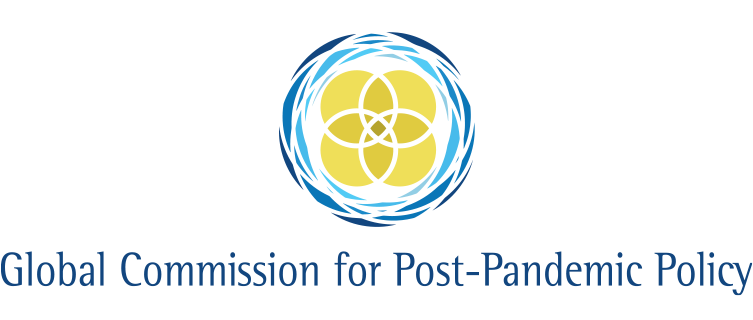Research Monitor December 8th 2020
Health
The pharmaceutical company AstraZeneca––in partnership with Oxford’s Jenner Institute––announced on November 23rd the preliminary findings of two trials of a new candidate COVID-19 vaccine, called AZD1222. In two trials, one in the United Kingdom and one in Brazil, the AstraZeneca vaccine resulted in an average efficacy of 70%––approximately the same as a seasonal flu vaccine.
This came in the wake of two earlier competing vaccine announcements, first from pharmaceutical giant Pfizer and partner BioNTech on November 9th and then from the biotechnology company Moderna on November 16th. These higher efficacy vaccines––both with efficacies in excess of 94%––are expensive to produce, and need to be stored at extremely cold temperatures. AstraZeneca’s vaccine AZD1222 is cheaper to produce and can be stored at up to 8° Celsius, well within standard refrigerator conditions.
In the subsequent week, however, expert voices have raised concerns about AstraZeneca’s disclosures. The company did not present results from a single large-scale Phase III clinical trial––the final stage of testing for any new medication. Instead, AstraZeneca’s findings came from two separate Phase III trials––12,390 participants in the United Kingdom and 10,300 in Brazil––using different methodologies.
Of those participants, AstraZeneca based their findings only on results from 11,636 participants––without explaining that number. Those participants in turn were exposed to two different treatment regimens. The first, a half-dose of the vaccine followed by a full-dose booster a month later, was given to 2,741 participants. The second, two full-doses of the vaccine a month apart, was given to 8,895 participants.
The description of the first dosing regimen also came as a surprise––it appeared explicitly in neither trials’ initially approved methodology. It emerged later in the week that the half-dose regimen was a consequence of a manufacturing defect in the vaccines supplied to a subset of trial subjects. The change was only identified later when that subset showed noticeably lower rates of reported side-effects. A range of other issues have also subsequently arisen. Nevertheless on December 8th a peer-reviewed study of the Astra-Zeneca vaccine was published in the Lancet and confirmed its findings, including on the two-dose regimen. Regulators, in the UK, USA and EU initially, will now have to evaluate the full data and these various concerns and decide whether to give approval to the vaccine.
Economics
A new paper published in the World Bank’s Policy Research Working Paper series analyses the effect that different reopening trajectories had on a country’s economic recovery after the first wave of the COVID-19 pandemic.
By early April, most European countries had gone into some variation of a national lockdown in response to the initial late-February and March wave of infections. However, while this initial policy response was relatively homogeneous, different countries’ choices of reopening policies were much less uniform. The large degree of uncertainty surrounding contagion risks and difference in tolerances for the economic impact of lockdown measures led countries to take different reopening paths.
The Chief Economist for Europe and Central Asia Region at the World Bank, Asli Demirgüç-Kunt, and collaborators Michael Lokshin and Iván Torre, set out to investigate what effect the timing and speed of these different reopening trajectories had on a country’s ultimate economic recovery. Using a dataset of thirty-seven countries in Europe and Central Asia, the team compared a country’s reopening trajectory––quantified by the Oxford Blavatnik School of Government’s Stringency Index––with its total electricity consumption over the same period, a proxy for economic activity.
Their analysis strongly suggests that countries that chose to adopt a gradual or staged reopening experienced a stronger economic recovery than countries that lifted restrictive measures more quickly before the pandemic was fully under control. In particular, postponing the lifting of restrictions until after the peak of infections had been reached left a notably positive impact on economic activity.
Other factors played an important role too. The study found that higher levels of trust in government were associated with a greater degree of economic activity in countries that pursued a gradual reopening process. They also cited evidence that countries in which citizens were regularly furnished with objective data on the progress of the pandemic saw an accelerated recovery process.
Politics
A new paper published in the Journal of Chinese Political Science by two American academics demonstrates how, over the last year, countries led by nationalist governments have tended to emulate each other’s COVID-19 policies.
While leaders generally justify their chosen policy responses as based on the best available advice from public health experts and scientists, some recent policy diffusion research in America has suggested that countries often simply emulate the COVID-19 policies of their geographic neighbours.
The researchers John Wagner Givens from Kennesaw State University and Evan Mistur from the University of Texas at Arlington––co-authors on the aforementioned diffusion research––looked at whether a similar dynamic might be at play in countries with similar governing ideologies. The authors define nationalism as an ideology that values national identity over belonging to other groups and seeks the distinction and preservation of that identity. They found that even among countries that are politically or geographically distant, nationalist regimes––including in the United States and Brazil––seem to have favoured similar approaches toward the pandemic.
Controlling for linguistic, trade, geographic, and political connections, the scholars say it is clear that, over the last year, nationalist regimes have emulated each other’s policy responses and postures. Nationalist regimes often appear to have used a combination of downplaying the problem, especially early on, appealing to exceptionalism by arguing that their country would be uniquely protected, promoting as-yet unproven preventative measures and treatments, and blaming outside groups including other countries and transnational actors.
The finding reveals a new mechanism of policy diffusion but also highlights the growing levels of international cooperation between nationalist regimes and leaders. This trend is also reflected in the partnered efforts of Poland and Hungary––two nationalist regimes in Europe––to block the European Union’s landmark €1.8 trillion budget-and-recovery package.
GCPPP Newsletter
We now publish a weekly newsletter to inform friends and supporters of the Global Commission’s progress and to provide updates when new content is published. Please sign up here:








